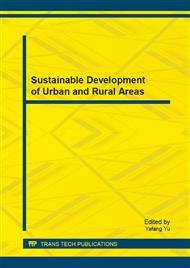p.226
p.230
p.234
p.238
p.242
p.245
p.249
p.254
p.258
Chloride Ion Penetrability of HPFRCC after Loading
Abstract:
Cracking is one of the most important factors in the serviceability as well as durability performance of concrete structures. Recently, it was recognized that a high performance fiber-reinforced cementitious composite (HPFRCC) provides a possible solution to this inherent problem of cracking by smearing one or several dominant cracks into many distributed microcracks. The purpose of the present study is to explore the ductility characteristics of HPFRCC. The permeability of HPFRCC after subjected to different load levels were measured to identify the effect of reduced cracking among the mixtures. It was confined that the permeability of proposed mixtures was lower than that without microfibers. This means that the proposed materials can reduce the crack width greatly at the same applied loads
Info:
Periodical:
Pages:
242-244
Citation:
Online since:
January 2014
Authors:
Keywords:
Price:
Сopyright:
© 2014 Trans Tech Publications Ltd. All Rights Reserved
Share:
Citation:


